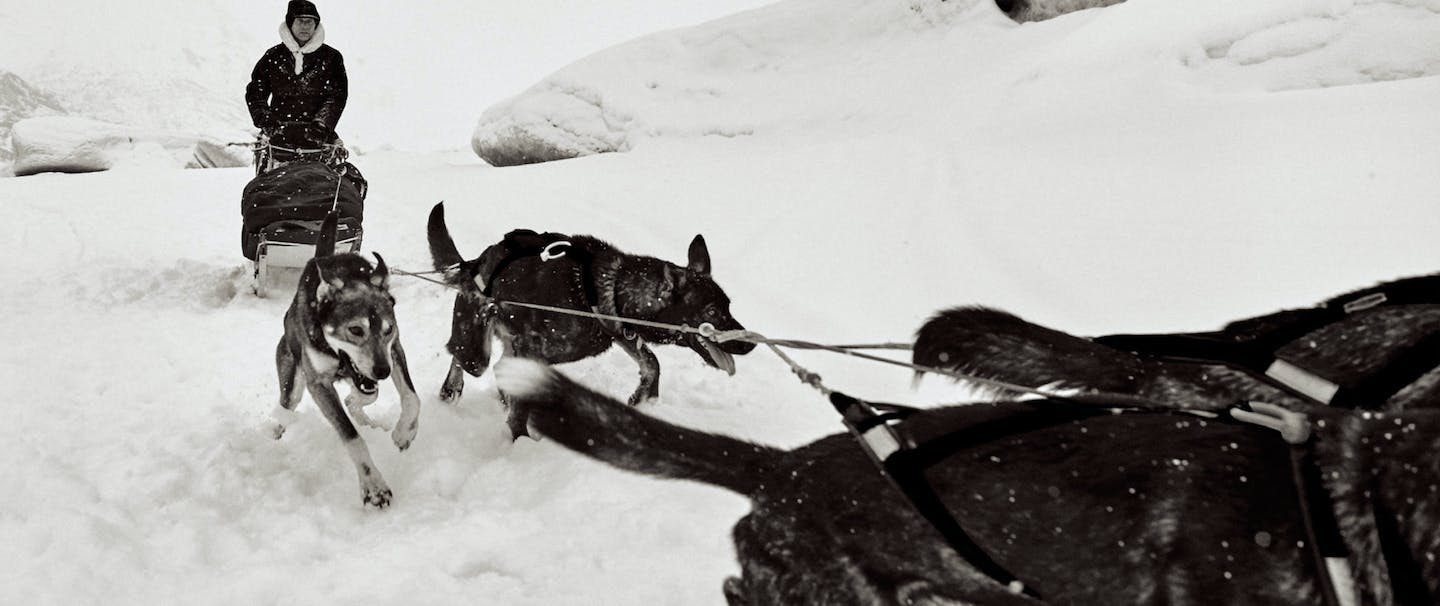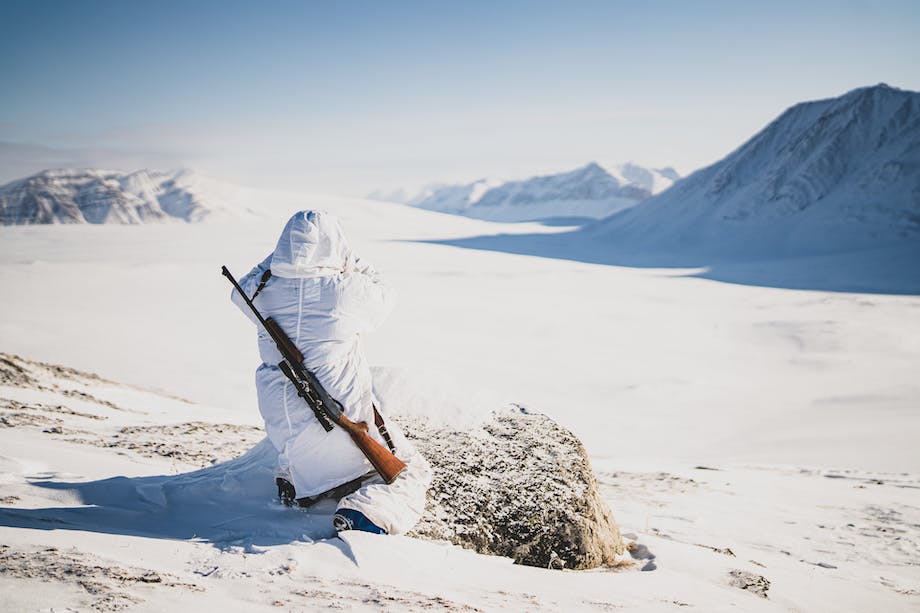Running a string of sled dogs in the cold arctic night on the Iditarod Trail is not for the faint of heart. Ripping over frozen undulating terrain, dimly lit by an ever-bobbing headlamp, a musher must alternately trust that his team is not heading towards disaster while cheering them on as they plunge further into the darkness. They tread on a razor’s edge at times. Mushers often tie themselves to their sleds to ensure that if things go south, they are not stranded on the trail as their dogs continue to race forward. There is little time to soak in the icy beauty that surrounds the sled. Instead, one must focus on the next checkpoint and the ultimate goal, Nome. The race is infamous for breaking the will of even the heartiest, and many a musher has called it quits mid-race. But not Martin Buser.

Martin Buser
Over the last four decades, Buser, a four-time Iditarod champion, has become a fan favorite and a legend amongst the small, tight-knit community of competitive mushers. Part of that is due to his relentless affability. He is known for his easygoing attitude and sense of humor. When others grimace, he seems to exude a lighthearted joy that sees fans line the course to catch a glimpse of his smiling visage as he slides by behind a string of dogs he calls family. It’s part of the reason that he has finished all 39 Iditarods he has entered. He has never waved the white flag. It’s also why he has finally decided to call it quits and hand over the traces to a new generation.


"Between all of the races I have run, I figure I have over 50,000 miles under my belt ...That's enough to encircle the equator, and all those miles, frostbite, and injuries have battered my body a bit. I would rather have finished 39 races and be alive than do 40 and die."
“Between all of the races I have run, I figure I have over 50,000 miles under my belt,” says Buser. “That’s enough to encircle the equator, and all those miles, frostbite, and injuries have battered my body a bit. I would rather have finished 39 races and be alive than do 40 and die. I am a bit stubborn and have always made it a point to make it to the finish, and now it is time to cheer on others from the sidelines.”
When Buser arrived in Alaska in 1979 from his homeland of Switzerland, he knew he wanted to try his hand at mushing. He had spent a few years learning the ropes back home and ran his first Iditarod with someone else’s dogs in 1980. After running the race in 1981, Buser decided to dive into it full-time and opened Happy Trails Kennel in 1982 in Big Lake, Alaska. The name was a direct manifestation of a theory that he wanted to put into practice, one that would transform the world of competitive dog mushing. Buser wanted to breed, raise, and train happy, fast, long-distance sled dogs, not the traditional muscular fluffy huskies that had dominated the scene for decades.
For the next few years, he worked long days and nights following a detailed breeding plan that blended the strengths of sprint dogs with longer-legged athletic hounds that loved to run. Many in the field laughed at him, but his love of his dogs was infectious. By treating his dogs humanely and showering them with love, he showed others that you could race sled dogs without abusing them.
When he returned to the race in 1986 behind a string of his dogs, the results of his program were evident. His multicolored long-legged hounds ran forever and basked in their owner’s cheerful demeanor radiating from the runners behind them. Because they could run faster, Buser took longer breaks and hit the trail with fresher dogs. He won his first Iditarod in 1992, following up again in 1994, 1997, and 2002. In 2002 he became the first racer to run the 1,000-mile race in under nine days (8 days, 22 hours, and 46 minutes), and he finished among the top ten mushers nineteen times.
Perhaps his most impressive race was in 2005 when Buser finished thirteenth. In a race known for broken bones and battered bodies, he headed to the start line with a gruesome injury that would have deterred most people from going to the grocery, much less battling the Alaskan winter. Four days after loping off half of his middle finger in a table-saw accident, he arrived with his dogs. He could barely hold onto the sled with his right hand and had 70 stitches holding his finger together.
“I saw no reason not to race and just put my head down and had fun with my dogs, they love the race, and I knew they were ready,” says Buser. “I have always figured that as long as no bones were sticking out of my body, I could make it back on the runners and keep heading forward.”


In perhaps the perfect testament to his iron will, it took a particularly rough stretch of trail during the 2022 race to finally make Buser think it might be time to step away.
“We had gotten some horrendous ground blizzards just towards the end of the race that coated everything in ice, especially in spots you are not expecting to see it. The hillsides were covered in glare ice, and I had to climb up and over them to get to Nome'” says Buser. “I was at the physical limits of my abilities, something that had happened before on races, and the sled tipped over. Now you fall over all the time racing, that’s why you tie yourself to your sled, but this time was different.


I was lying on my side on the ice, panting, near the end of my energy. I was looking at my left hand, which was barely hanging onto the handlebar by a few fingers, and I asked myself how much longer could I handle this. I managed to get myself up and finish, I damn sure wasn’t going to quit, but I knew that this was probably my last Iditarod.”
These days Buser is focused on introducing visitors to the Last Frontier and the joys he has experienced with his sled dogs at the Happy Trails Kennel with his wife, Kathy.




